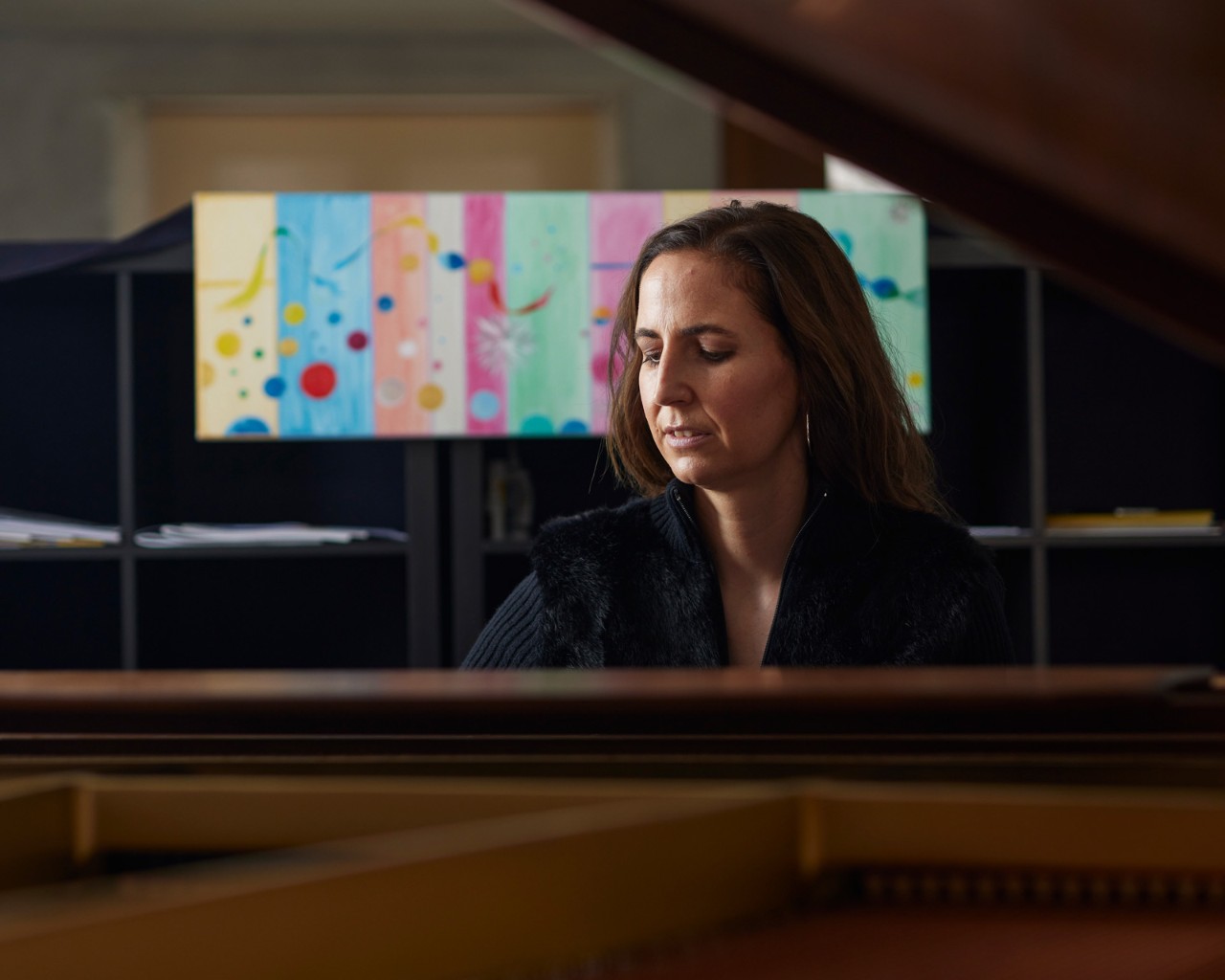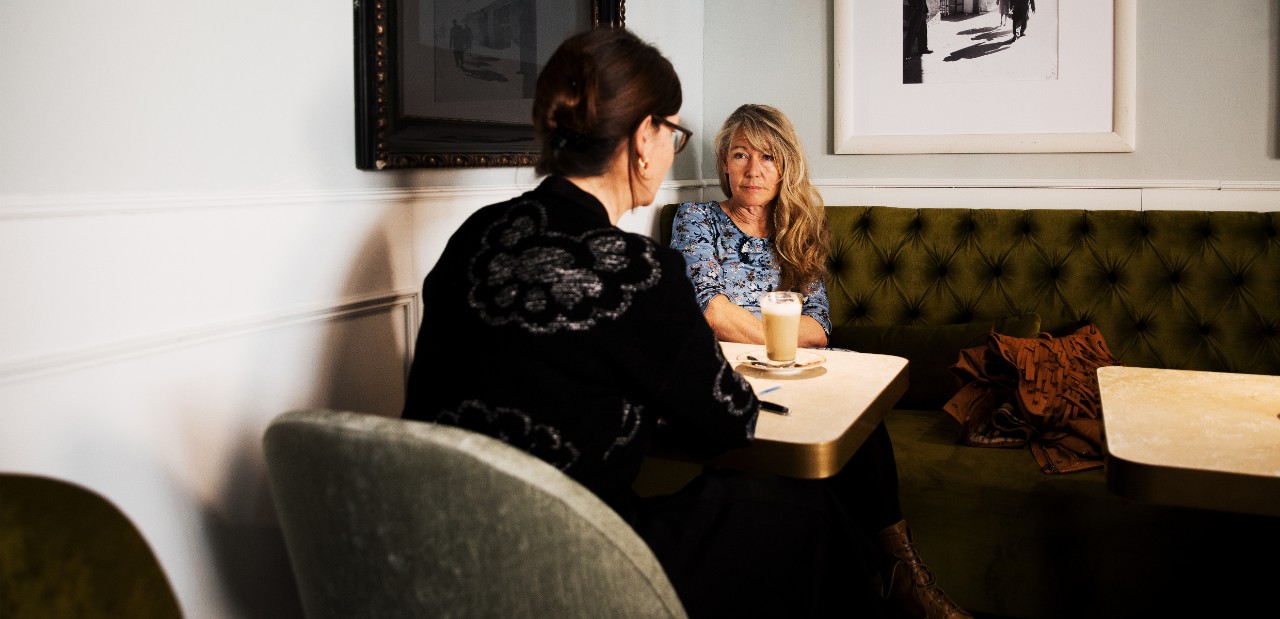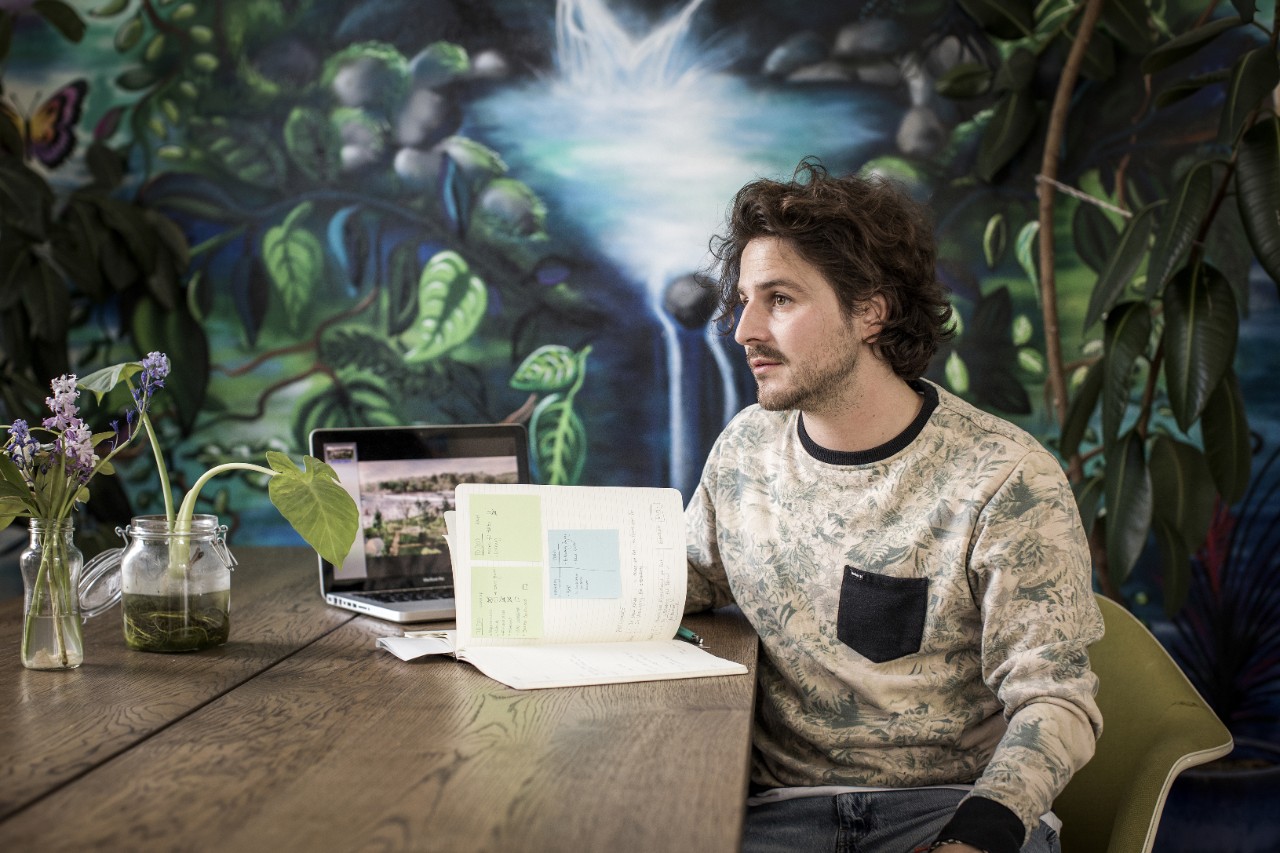I hear something that you can’t see.
Musician Elisabeth Sulser has synaesthesia. She sees tones as colors - C is red, C sharp is pink. She attracts quite a lot of attention with her abilities, but sometimes also incomprehension.

It wasn’t until you were 16 that you noticed that you perceive sounds differently from the people around you. Why did it take so long?
I had always been greatly stimulated by my senses: sounds, colours, tastes. As a child I thought this was perfectly normal and I simply protected myself from certain sounds. But when I turned 16 I realised that other people didn’t react the same way as me. Others are able to sort and organise their senses, but I am overwhelmed by all of them at once.
When did it dawn on you that you were different?
It was a perfectly normal evening with a friend in Chur. It was raining heavily and I suddenly realised that the pitter patter of the rain sounded like the key note G and that G was blue. Initially I didn’t understand this perception myself. But as I sang a scale I could see the colours before my eyes: C is red, C sharp is pink, etc. My friend was completely perplexed, as were my parents who put it down to tiredness. But as I began to do some research on the subject I realised that synaesthesia is a perceptual phenomenon that other people have too. It helped enormously.
Please take us on a journey through your mind: What do you see when you hear music?
As soon as the music starts, colours flash before my eyes like on a projection screen. They change constantly. I also see shapes such as circles or small squares when I hear a percussion entry. I can also taste things on my tongue depending on the tone interval. A third tastes a little salty, a major third sweet, a fifth tastes like a glass of water, and a sixth like single cream.
How do you communicate with other musicians?
Sometimes I am not able to master certain passages of a piece. I can feel an inner resistance, which is due to the colours. Often I find it helpful if I am able to have a say in the tones or the interpretation of the piece. I find it easiest when I play a solo or duet, but I also take great pleasure from playing in a group if it’s with the right people.
Do you have this intense reaction with everyday sounds too?
I see colours when I hear the key note, for example when I hear church bells or an alarm clock. The whir of the coffee machine in the morning makes me see a dash of light blue. If I don’t detect a key note, I see a grey figure. Everyday sounds don’t usually taste of anything. But when I hear voices I can taste lots of different materials such as stone, sand, earth, liquid metal, cloth, wine and air.
That must be really intense. Are these simultaneous perceptions a burden sometimes?
No, I don’t know any different. As a musician, suffering from synaesthesia certainly has its advantages: When I have a piece of music in front of me I can orientate myself according to the colours and shapes. I don’t need to practise in order to learn a piece off by heart.
How do you get away from it all?
I enjoy my own company and live in the countryside. I need peace and quiet. And I paint music. If I like the colours of a piece, I listen to it until I know it off by heart, then I paint the most beautiful parts. Afterwards I see the colours much more intensely and everything is clear and neat and tidy. Painting is cathartic for me, like tidying up.

Professor Lutz Jäncke, Professor for Neuropsychology
“Synaesthesia is a double perception where the two areas of a person’s brain are connected and simultaneously active. Synaesthesia develops when the brain of the affected person is intensively engaged from birth on. It is not an illness, but rather a special form of normality.”



